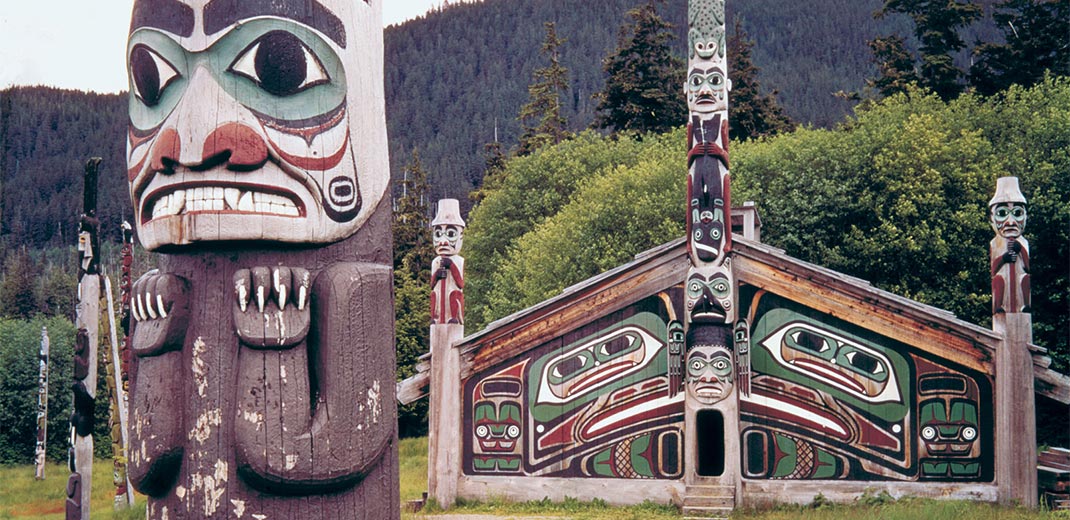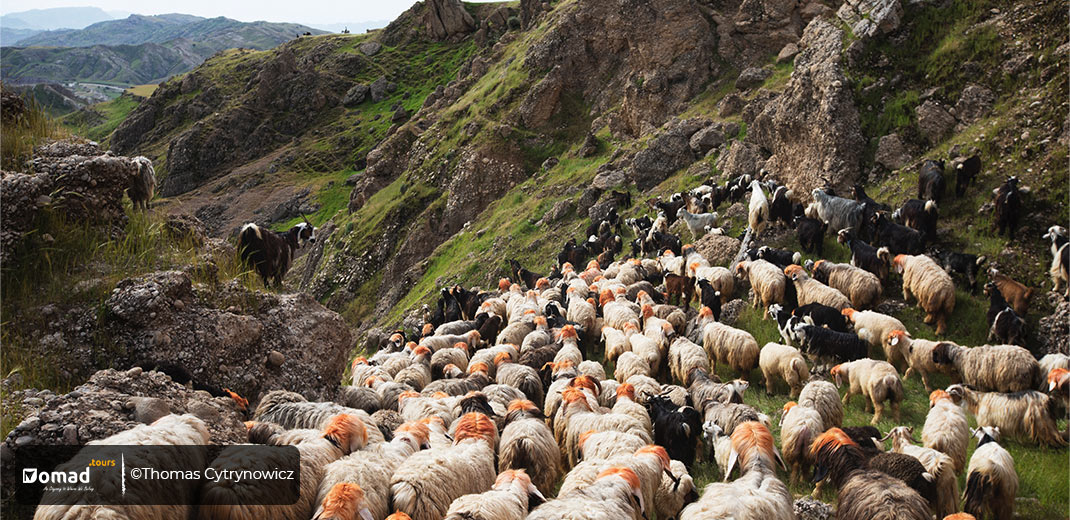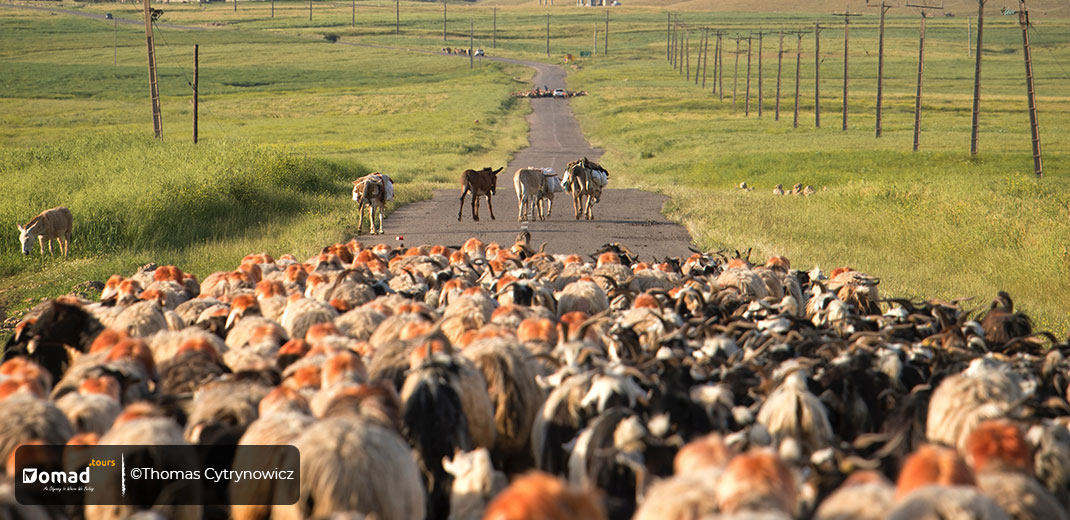Nomad is defined as a member of a community without a fixed habitation. They regularly move between particular areas. There are three types of nomads around the world: hunter-gatherer nomads, pastoral nomads, and thinker/trader nomads.
-
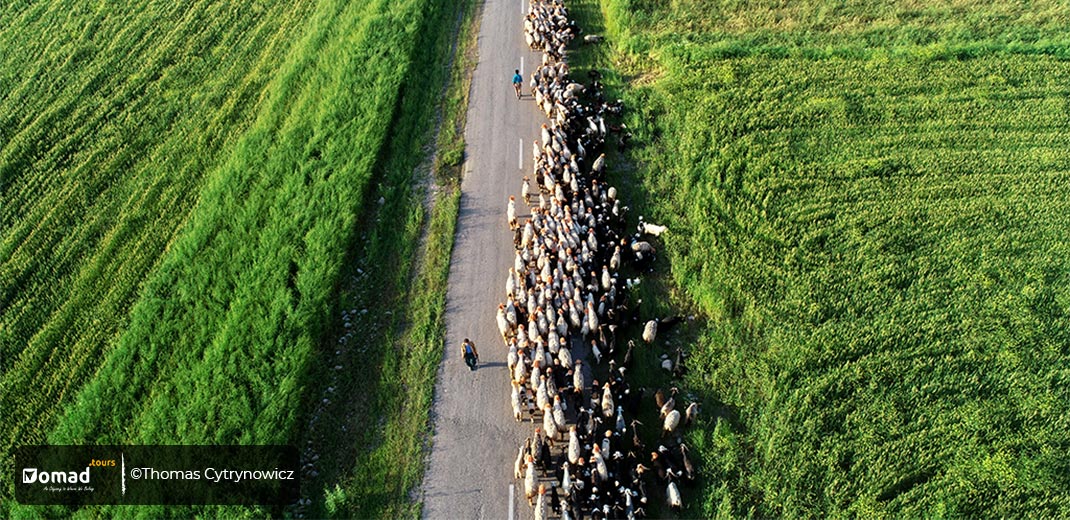
Bakhtiari Nomads
Nomads are known for their migration. They migrate periodically in a year so that they will be back to their first location. It is estimated that there are about 30-40 million nomads around the world. In this article, we describe different types of nomadic tribes around the world.
(Before starting this article, reading The Origin of Nomadism can be quite helpful.)
1. Hunter-Gatherers
-

Hunter-Gatherers
Hunter-gatherer nomads, also known as Foragers, seem to be the earliest type of human community. They seasonally harvest wild plants and move from one campsite to another, as their livelihood conditions require. Accordingly, their main food is obtained from foraging. They have different hunting and gathering strategies based on their local environment. The strategies include hunting animals, trapping big game, fishing, gathering insects and wild plants. Due to the developments in agriculture, these communities have mostly gone extinct or converted to farming and animal husbandry.
The following, are different hunter-gatherer tribes around the world:
-
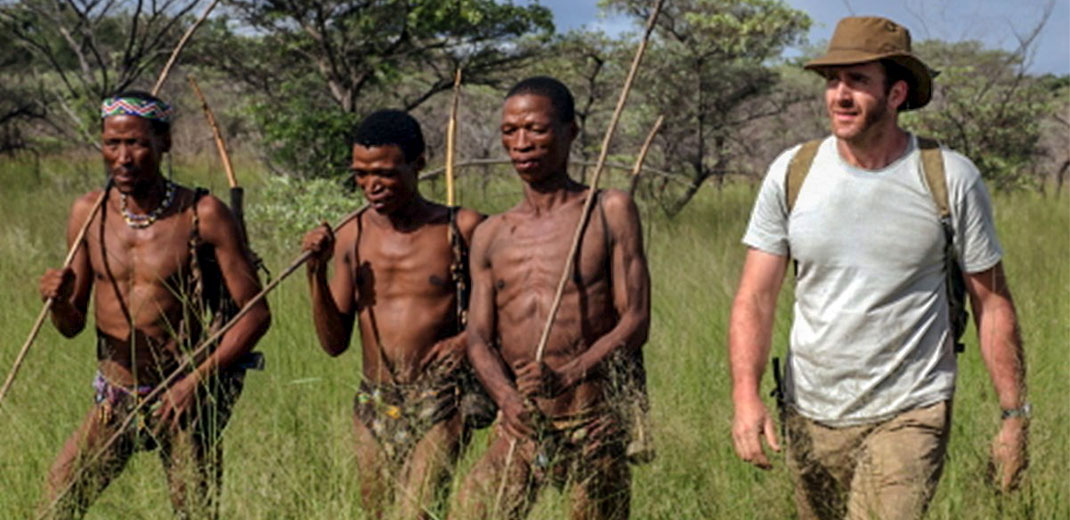
Kahari Hunters
- Tlingit:
They were a group of hunter-gatherers in the American Continent decimated by disease brought over by Europeans. There are still about 15,000 Tlingits living on the border of Alaska and British Columbia.
- Khoisan:
They live in southern Africa. Though modernization has threatened their lifestyle, they have tried their best to keep it alive.
- Nukak-Maku:
They have hidden deep into Amazon rainforests in Colombia. There are less than 1000 of them now. They live in small groups (9-30 people). They are constantly on the move and settle in a place only for a few days.
- Bushmen:
The indigenous Bushmen live in southern Africa and most of them are hunter-gatherers. Above all, they are well known for their deep connection with the environment.
2. Pastoral Nomads
Pastoral Nomads are one of the biggest populations of nomads around the world. They raise herds (sheep, cattles, goats, and camels) and move with them to places with fresh, green pastures with suitable plants for their herd. They are sedentary in a specific location and move to another place for finding resources. Pastoral nomads live mainly in central Asia and West Africa. It seems that the more authentic type moves the herd while the modern type drives the herd to the intended area.
- Iran’s Nomads:
There are different nomadic tribes in Iran including Bakhtiari, Qashqai, Shahsavans, etc. The population of nomads in Iran is around 1,000,000 people which consists of 1.5% of Iran’s population. There are nomads in almost every province of Iran except for Kurdistan. Fars Province has the greatest number of nomads which is about 141,315 nomads. It includes 11.91% of Iran’s nomads. Qashqais mainly live in Fars Province. They are famous for their art of weaving and beautiful carpets.
Bakhtiaris live in the southwest of Iran. They are the biggest tribe of Iran’s nomads who still migrate on foot (not with cars). They consider themselves as descendants of Key Arashthe brother of Key Ghobad who is an Iranian Mythological King. For more information about Bakhtiaris, read this: “Who are the Bakhtiari? | Are They Still Nomads?”.
- Bedouin:
There are about 21 million Bedouin people. Although many Bedouins changed their lifestyle from nomadism, they tried to keep their culture and their language(Arabic) which is one of the purest, most complete languages.
- Kochis (Kuchis):
settled in Afghanistan, 1.5 out of 2.4 million of this community, still live a nomadic life. Like so many pastoral nomads, they raise goats and sheep and sell their meat, wool, and dairy products for a living.
-
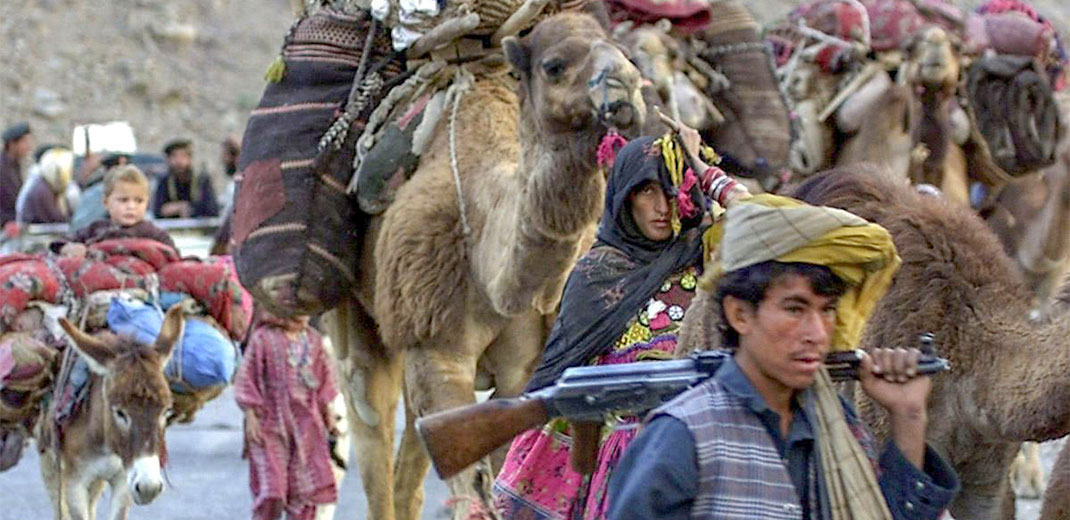
Afghan Nomads
- Sarakatsani:
Being a group of Greek nomads, they were nomads since the 4th century AD. The Sarakatsani were perpetually on the move and dependent on nature. Above all, they were subject to the demands of the herds that were their sole possession and which determined their whole livelihood. In springtime, they move with their families and herds into the high mountains of Rhodopi (today’s Bulgaria) in search of pastures.[1].
- Mongols:
There are 3-6 million Mongols in China. They are nomadic pastoralists and live in structures called Yurt. They mostly herd sheep, yaks, goats, camels, and horses.
-
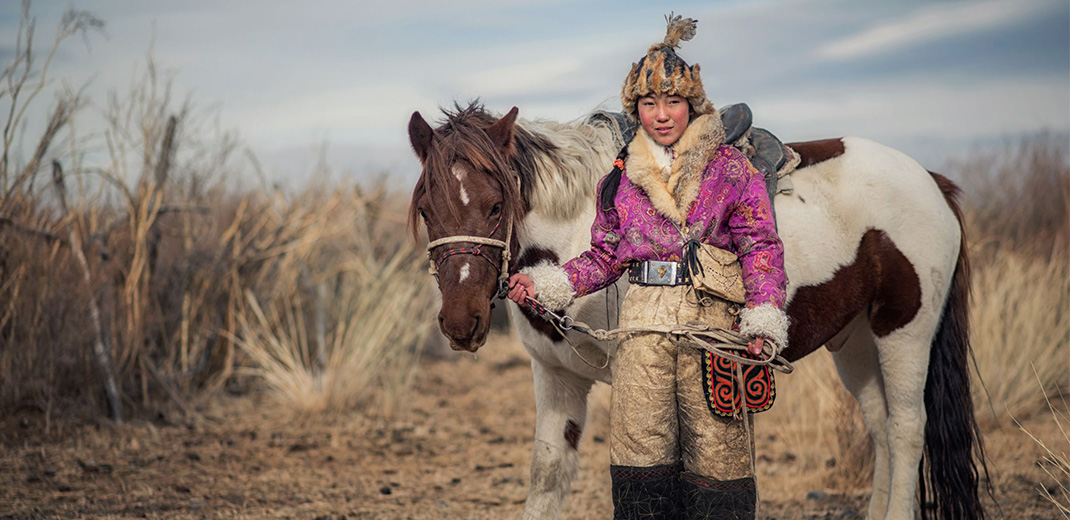
Mongol Nomads
-
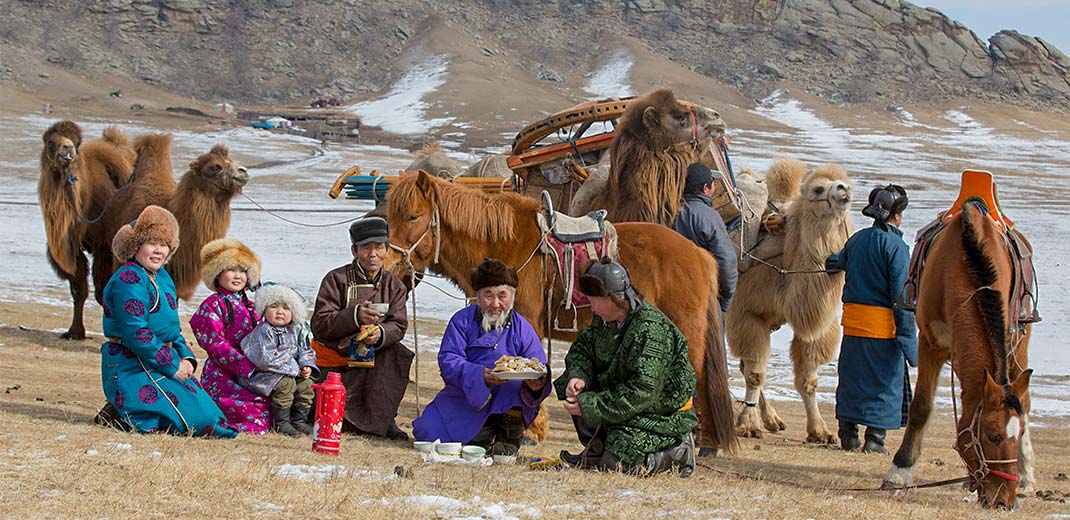
Mongol Nomads
- Pokot:
They are nomads in Kenya and Uganda. They are well known for their rich proverbs, riddles, as well as stories. There are almost 700,000 Pokots living a nomadic life now.
3. Peripatetic Nomads
-
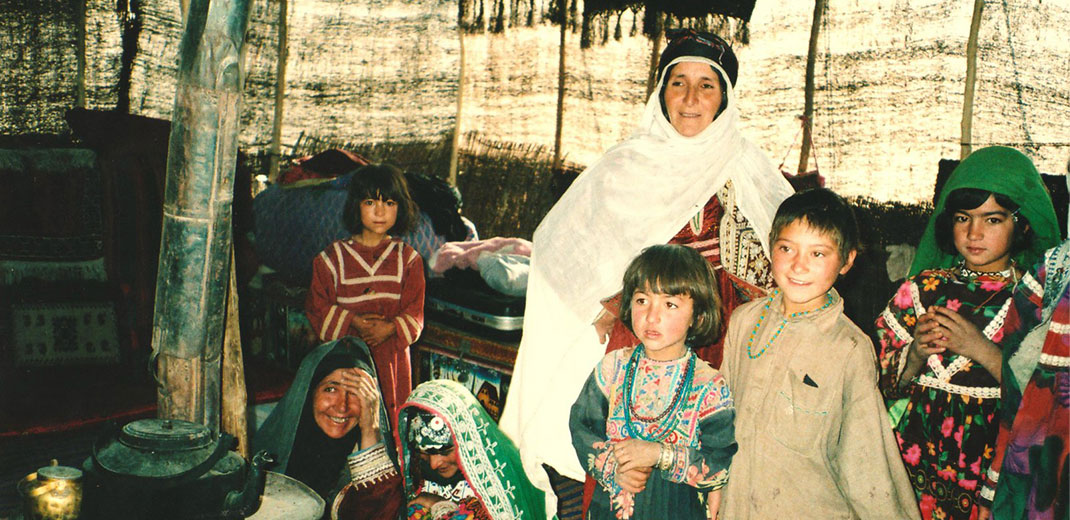
Nomads
Also known as tinker or trader nomads, Peripatetic nomads are one of the nomadic types around the world. They travel from place to place and offer a trade. The development of agriculture and industrialization has changed their lifestyle, so there are a few remaining nomads in the world continuing their lifestyle. Most of them have some traditions which originate from South Asia. Peripatetics in Iran, Turkey, and Afghanistan still speak the dialect of Indo-Aryan like Koli and Ghorbati. Irish Travelers are an example of Peripatetic Nomads.

